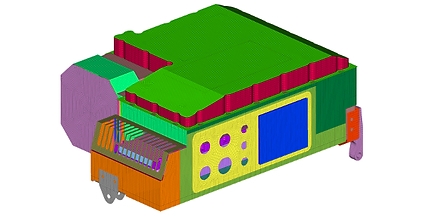In the realm of engineering, structural analysis is a critical component that ensures the safety, durability, and performance of structures across various industries. With the ever-increasing complexity of designs and materials, traditional analysis methods are becoming obsolete. This is where structural analysis software comes into play. By leveraging advanced computational tools, engineers can conduct detailed assessments of structures, leading to optimised designs that meet stringent safety and performance standards. This article explores the importance of structural analysis software in engineering and how it enhances design processes, ultimately benefiting industries such as aerospace, manufacturing, and construction.

Understanding Structural Analysis
Structural analysis is the process of evaluating the physical effects of loads on physical structures. It involves determining how structures respond to various forces and conditions, including:
- Static Loads: Forces that are applied gradually and remain constant.
- Dynamic Loads: Forces that change with time, such as wind or seismic activity.
- Thermal Loads: Forces that result from temperature changes affecting materials.
Engineers must consider these factors when designing structures to ensure they can withstand everyday stresses as well as unexpected events.
The Shift to Structural Analysis Software
Traditionally, structural analysis engineering involved manual calculations and approximations. However, with the advent of structural analysis software, this approach has transformed. These sophisticated tools allow engineers to create detailed models and simulate real-world conditions, providing valuable insights into structural performance.
Advantages of Structural Analysis Software
- Accuracy and Precision: Structural analysis software enables engineers to perform highly accurate simulations. This precision reduces the risk of errors that can arise from manual calculations, leading to safer and more reliable structures.
- Efficiency in Model Generation: The ability to import geometry from a variety of industry-leading software means that engineers can develop models quickly and efficiently. Software solutions streamline the modelling process, allowing for the creation of complex geometries with ease.
- Advanced Analysis Techniques: Modern software tools provide capabilities for various types of analysis, including linear and nonlinear statics, buckling analysis, and fatigue analysis. This versatility enables engineers to conduct comprehensive evaluations and optimise designs based on specific requirements.
- Collaboration and Integration: Structural analysis software often integrates seamlessly with other engineering tools, facilitating collaboration among different teams. This integration ensures that all aspects of a project are aligned, leading to more cohesive and effective design solutions.
Key Features of Structural Analysis Software
1. Multi-Format Model Development
Engineers can develop models in multiple formats, accommodating the diverse requirements of various industries. This feature is particularly beneficial for projects involving complex systems where traditional methods may fall short.
2. Advanced Meshing Techniques
The ability to perform brick and shell meshing of complicated geometries enhances the accuracy of simulations. By accurately representing the physical characteristics of materials and structures, engineers can achieve more reliable results.
3. Comprehensive Analysis Capabilities
Leading structural analysis software platforms support a wide range of analysis types, allowing engineers to tackle various challenges. From linear statics to optical performance analysis and structural optimization, these tools offer the flexibility needed to address specific project requirements.
Quartus Engineering: Driving Innovation in Structural Analysis
Quartus Engineering stands at the forefront of structural analysis services, utilising state-of-the-art structural analysis software to deliver efficient and reliable solutions. With expertise in renowned software tools like Nastran, Abaqus, Hyperworks, and ANSYS, Quartus Engineering can address a wide range of analysis needs, including:
- Linear and Nonlinear Statics: Evaluating structural responses under various load conditions.
- Fatigue and Fracture Analysis: Understanding material behaviour under cyclic loading conditions.
- Structural Optimization: Enhancing designs to achieve maximum performance with minimal material use.
By combining advanced analysis techniques with extensive experience, Quartus Engineering can tackle challenging problems and drive simulation-driven design processes. This not only enhances capabilities but also improves productivity and reduces project timelines.
Real-World Applications of Structural Analysis Software
Aerospace Industry
In aerospace engineering, the stakes are incredibly high. Structures must withstand extreme conditions while ensuring safety and performance. Structural analysis software allows engineers to simulate loads and stresses on aircraft and spacecraft, leading to designs that can endure the rigours of flight.
Industrial Manufacturing
Manufacturing equipment must be designed to handle various operational stresses. By utilising structural analysis software, engineers can optimise designs for durability and efficiency, ultimately resulting in higher productivity and lower costs.
Medical Products
In the medical field, product safety is paramount. Structural analysis ensures that medical devices can withstand user interactions and environmental factors, contributing to patient safety and product efficacy.
Conclusion
As the demands of modern engineering evolve, the importance of structural analysis software cannot be overstated. It empowers engineers to create safe, reliable, and efficient designs that stand the test of time. By integrating advanced computational techniques with practical engineering knowledge, structural analysis software is redefining the possibilities within the field. Organisations like Quartus Engineering exemplify this innovation, leveraging state-of-the-art tools to deliver exceptional structural analysis services. The future of engineering relies on these advanced technologies, ensuring that structures not only meet today’s standards but also adapt to the challenges of tomorrow.





